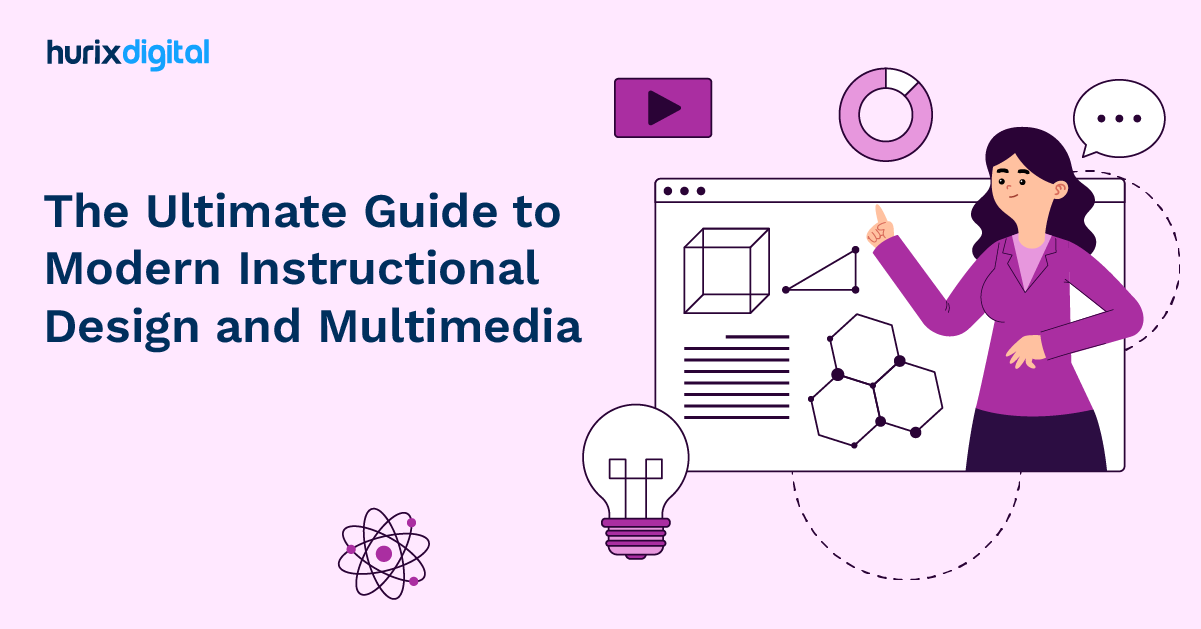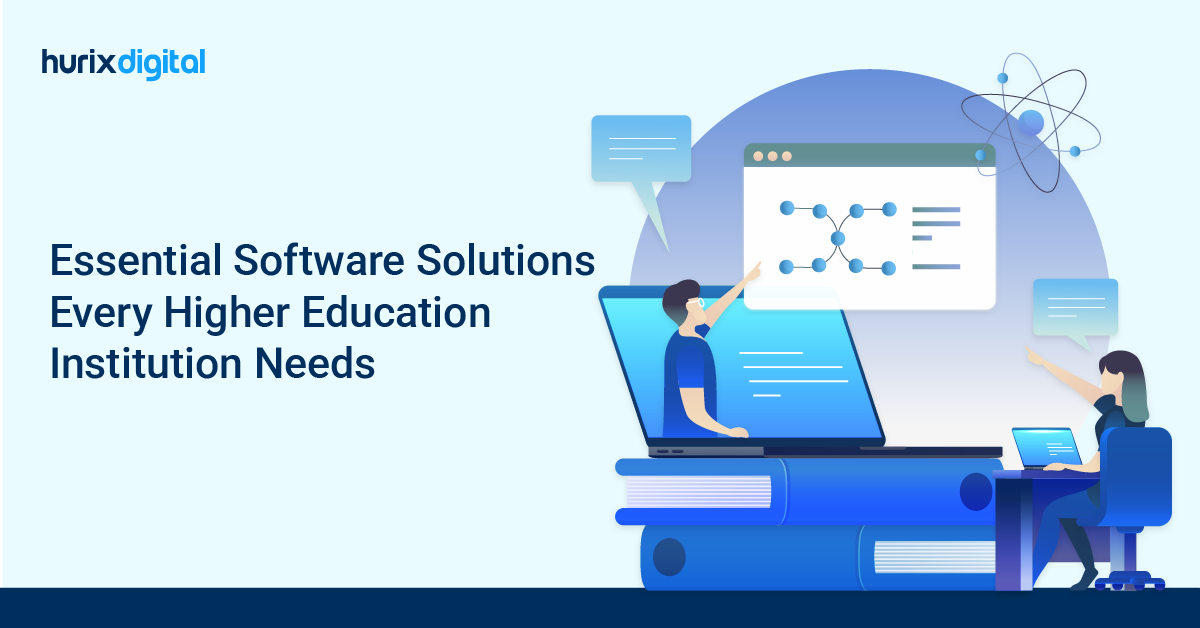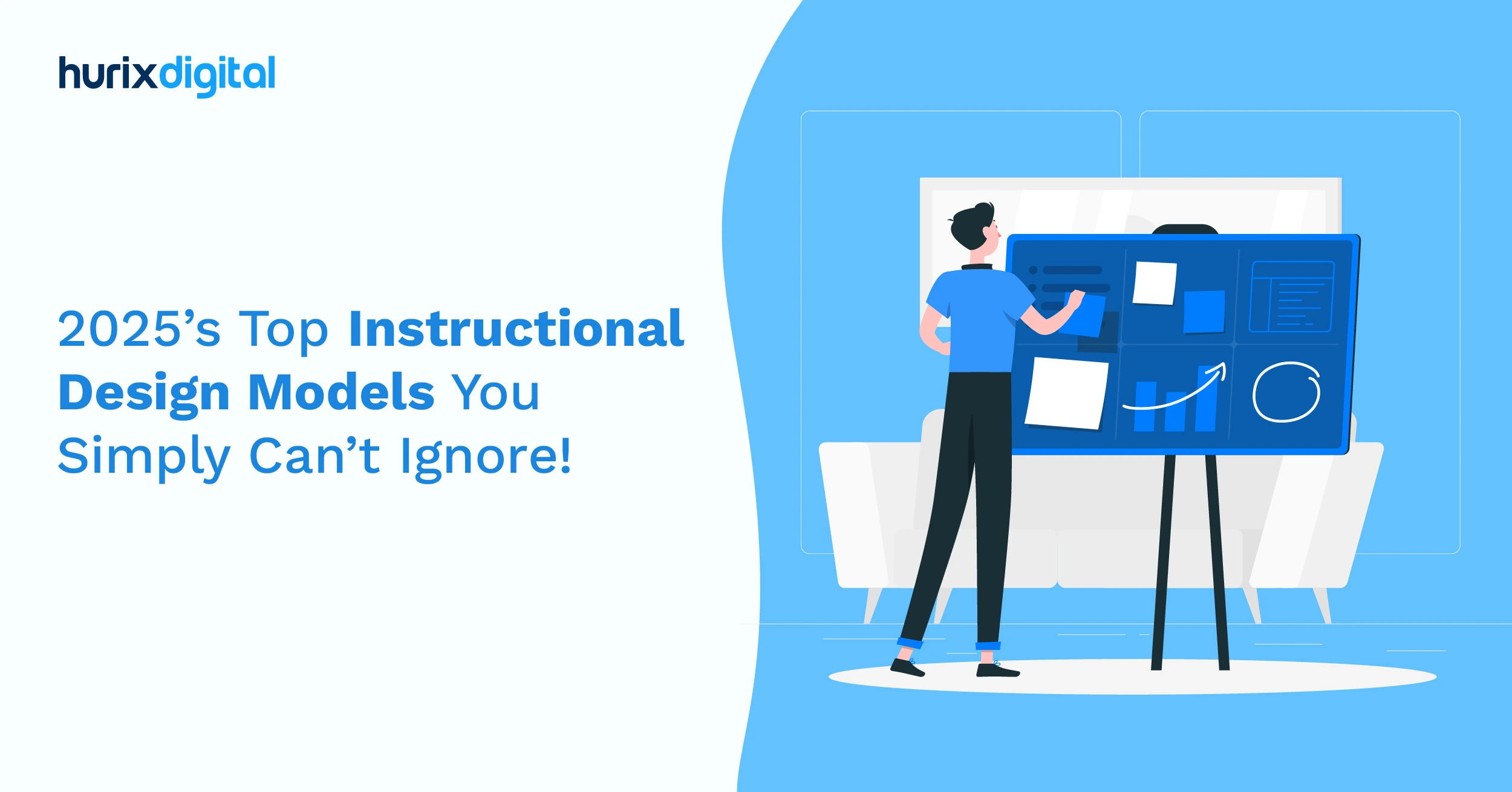
2025’s Top Instructional Design Models You Simply Can’t Ignore
Summarize with:
The world has changed immensely in just 2 decades. These changes have affected everything, from humans to business, and in today’s competitive world, we are always stuck on a common question: How can we make learning truly effective through better instructional design?
Here’s where instructional design models come into play. These models have transformed modern learning experiences to be more engaging and effective.
According to a report, instructional designer roles are expected to grow 11% between 2016 and 2026. This profession is growing due to an increasing awareness of designing structured, engaging, and accessible eLearning content that meets learners’ needs.
In this blog, we will talk about instructional design models that revolutionize how we approach education and training so you can be better prepared.
Table of Contents:
- What is Instructional Design?
- Why is Instructional Design Important in Learning and Development?
- Understanding the Role of an Instructional Designer
- Deep Dive into the Top 8 Instructional Design Models
- What are Adaptive Learning Technologies?
- What are the 5 Key Components of Adaptive Learning Technologies?
- Types and Use Cases of Instructional Design Strategies in Learning and Development
- Conclusion
What is Instructional Design?
Instructional design refers to the process of designing instructional and educational material.
The steps involved in creating an instructional design are planning the course content, analyzing the learners’ needs, developing the content, implementing it, and finally evaluating it.
The last step of gathering feedback and evaluating is very important as it determines the effectiveness of the instructional design.
Why is Instructional Design Important in Learning and Development?
- Customized Learning Experiences: Instructional design offers tailor-made learning experiences to suit learners’ unique needs and preferences. By customizing content and learning materials to cater to all kinds of learners, ID enables education, and not a mere transfer of knowledge, possible. The content is thereby relevant, engaging, and impactful.
- Optimized Resource Utilization: The right ID model can make or break the learning and development process. The right instructional design maximizes the use of resources, both in terms of time and materials. This results in cost-effective and efficient learning programs.
- Enhanced Engagement: Engaging learning experiences are more likely to be retained. Instructional design incorporating multimedia, interactive elements, and hands-on activities creates an environment that captures and sustains learners’ attention.
- Measurable Outcomes: Clear learning objectives and evaluation criteria are fundamental to instructional design. This allows for the measurement of progress and the assessment of the learning program’s effectiveness.
Understanding the Role of an Instructional Designer
Before diving into the instructional designer selection process, it is critical to grasp the significance of their role. Instructional designers are highly skilled training and development professionals responsible for creating worthwhile learning experiences that align with organizational objectives. They possess a unique blend of creativity, instructional design qualifications, and expertise in leveraging digital learning solutions.
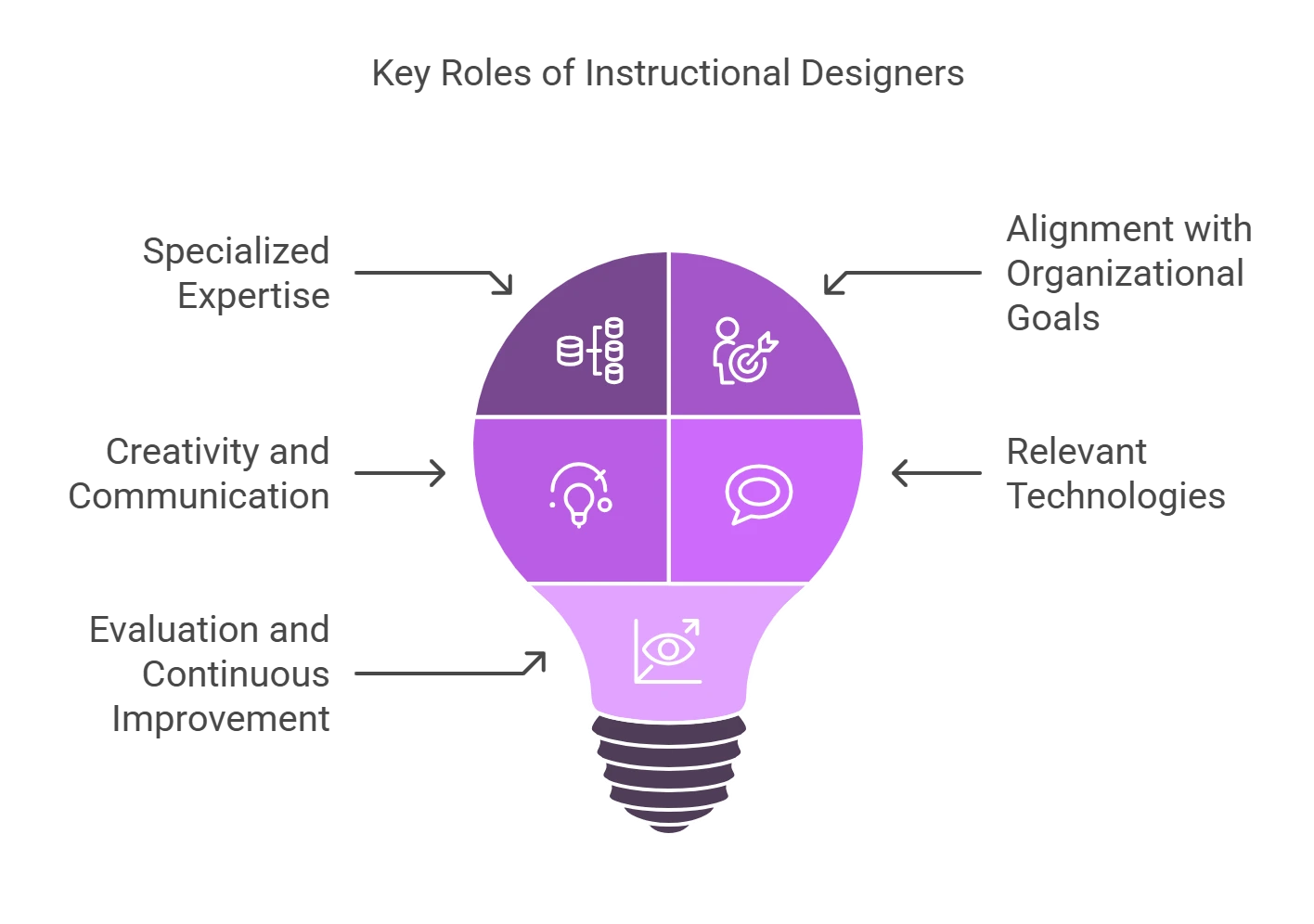
Here’s what makes an instructional designer important to all L&D initiatives:
1. Specialized Expertise
Instructional designers possess specialized knowledge and expertise in instructional design principles, adult learning theories, and best practices. They understand how people learn and can design training programs that align with learners’ needs, ensuring effective knowledge transfer and skill development.
2. Alignment with Organizational Goals
Instructional designers know how to engage with stakeholders and subject matter experts to ensure that training programs align with organizational goals and objectives. They conduct thorough needs assessments and analyze performance gaps to design targeted and relevant learning interventions that address specific organizational challenges.
3. Creativity and Communication
Instructional designers are creative communicators who can transform complex information into accessible and digestible content. They use various instructional strategies, multimedia elements, and interactive activities to enhance learner engagement and retention.
4. Well-versed with the Relevant Technologies
With the rise of digital learning solutions, instructional designers have become well-versed in leveraging technology to create successful eLearning experiences. They have the skills to select and utilize learning management systems, authoring tools, and multimedia software to deliver engaging and accessible online training programs.
5. Evaluation and Continuous Improvement
Instructional designers incorporate evaluation methods into training programs to measure their effectiveness and impact. They collect feedback, conduct assessments, and analyze data to assess the success of the training interventions. It enables them to make data-driven decisions and continuously improve the learning experiences they design.
Deep Dive into the Top 8 Instructional Design Models
Instructional design models provide structured approaches to designing, developing, and delivering training material for learning experiences that are engaging, efficient, and outcome-driven.
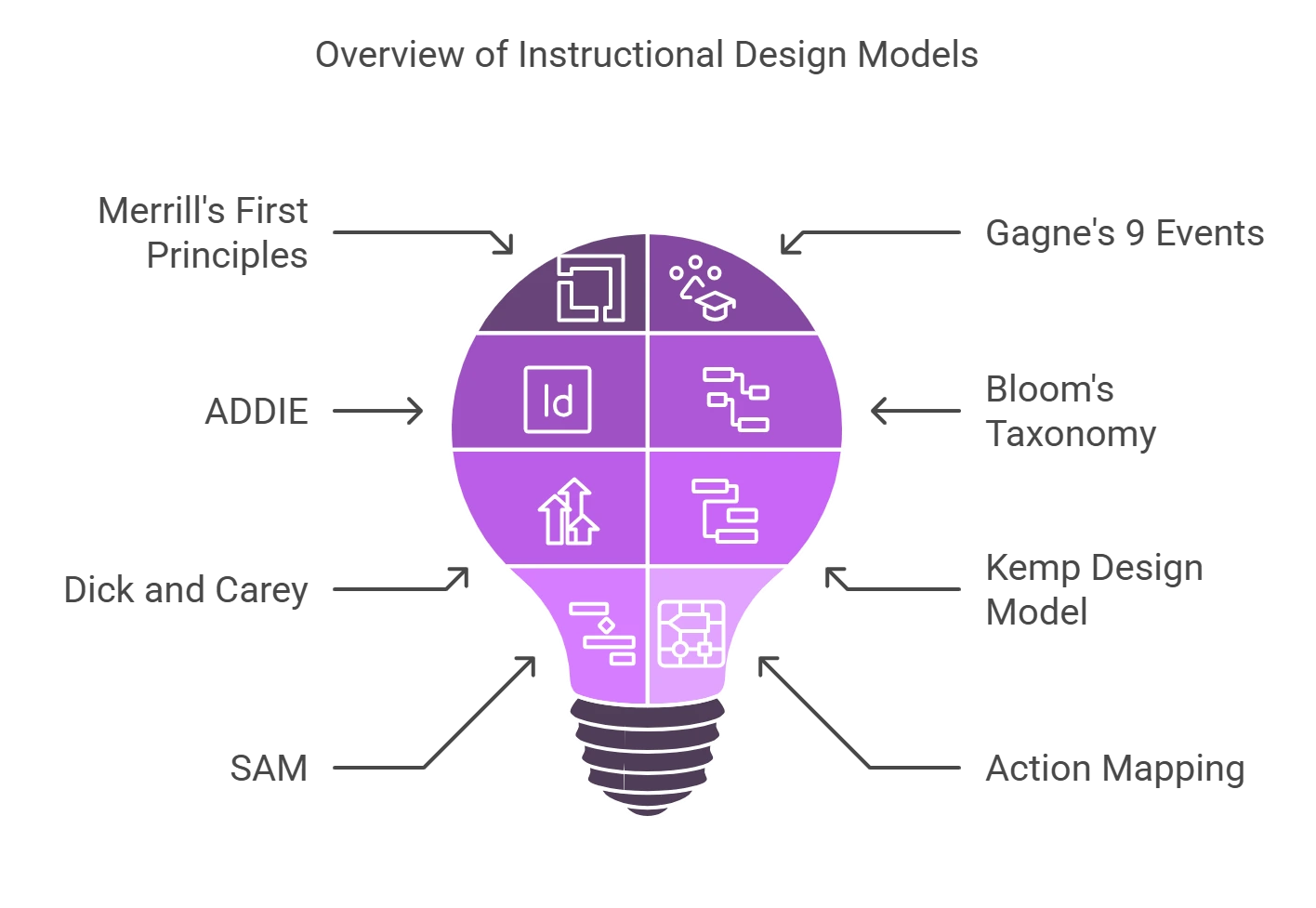
Let’s discuss the key features of each of these top 8 models in 2025:
1. Merrill’s First Principles of Instruction
Merrill’s First Principles of Instruction, developed by David Merrill, focuses on problem-based learning and real-world application through learning. The model addresses the engagement of learners’ practical skill development by weaving new knowledge into their experienced reality.
This model encourages learning through active participation and reflection as it focuses on providing relevant and applicable tasks within real-life situations.
Merrill’s Principles of Instruction (MPI) for 2025:
- Task-Centered: Design training around the real world.
- Activation: Build from where the learners are and link new content to their prior experiences.
- Demonstration: Use examples, models, or case studies to effectively demonstrate new skills or concepts.
- Application: Provide learners with opportunities to practice skills in realistic situations accompanied by constructive feedback.
- Integration: Engage the learners in applying their new knowledge in everyday tasks, thereby enhancing retention and usability.
2. Gagne’s 9 Events
Gagne’s 9 Events model, rooted in cognitive psychology principles, outlines a structured approach to instructional design that enhances learning and retention.
This model aims to guide educators in creating engaging and effective learning experiences that promote understanding and long-term memory retention by breaking down the learning process into nine key events.
3. ADDIE
ADDIE is an instructional design model, based on five phases of a systematic process: analysis, Design, Development, Implementation, and Evaluation. In doing so, it helps deliver well-structured learning experiences.
ADDIE’s systemic approach, from initial analysis to final evaluation, ensures that instructional materials are produced with clear objectives and outcomes.
- Analysis: This step includes identifying training needs, a statement of learning objectives, and information about the target audience. It ensures that the course addresses the right problems and meets the objectives.
- Design: It elaborates a precise action plan to accomplish learning objectives. This includes outlining the structure of content flow, instructional design approaches, and assessment techniques.
- Development: This step is on developing learning elements using tools and storyboards. This stage translates ideas into actual course elements like slide presentations, videos, or interactive modules.
- Implementation: Present the course to learners with an emphasis on successful knowledge transfer. Effective implementation guarantees that learners can use the content in real life.
- Evaluation: Evaluate the effectiveness of the course by determining if the learning objectives are achieved. Use this evaluation to make changes or to start the ADDIE cycle again.
4. Bloom’s Taxonomy
Bloom’s Taxonomy is a hierarchical model that categorizes educational objectives into cognitive domains. It provides educators with a framework for developing learning objectives aligned with different levels of cognitive complexity.
By categorizing learning goals into distinct levels, Bloom’s Taxonomy helps educators design assessments and activities that target specific cognitive skills.
Let’s have a look at the 6 Cognitive Phases:
- Knowledge: The base for deeper learning is to recall essential facts, concepts, or definitions from memory.
- Comprehension: Summarize, explain, or paraphrase information to demonstrate an understanding of it.
- Application: Apply learned concepts to solve problems or address real-world issues.
- Analysis: Separate complex ideas into smaller parts, identifying patterns and relationships while understanding how the different parts contribute to the final goal.
- Evaluation: Assess and critique information or processes against pre-set criteria to make informed decisions.
- Creation: Combine ideas to form new concepts or solutions, promoting innovation and greater understanding.
5. Dick and Carey
Dick and Carey’s instructional design approach is a comprehensive and systematic model that places a strong emphasis on personalized learning approaches by analyzing learner characteristics and task requirements to develop customized and effective learning experiences.
This model ensures a structured and learner-centered approach to instructional design by identifying instructional goals, conducting thorough analysis, and focusing on performance objectives.
- Identify instructional goals
- Conduct instructional analysis
- Analyze learner and context
- Write performance objectives
- Develop assessment instruments
- Develop instructional strategy
- Develop and select instructional materials
- Design and conduct formative evaluation
6. Kemp Design Model
The Kemp Design Model is a dynamic and flexible instructional design approach that emphasizes adaptability throughout the design process.
This model, by incorporating analysis, design, development, implementation, and evaluation in a cyclical manner, allows for iterative improvements and adjustments based on feedback and evaluation results:
- Analysis
- Design
- Development
- Implementation
- Evaluation
7. SAM (Successive Approximation Model)
SAM (Successive Approximation Model) is an agile instructional design model that prioritizes rapid prototyping and iterative development to create efficient and effective learning solutions.
This model focuses on preparation, iterative design, development, and evaluation, enabling quick turnaround projects and continuous improvement through feedback loops.
- Preparation
- Iterative Design
- Iterative Development
- Iterative Evaluation
8. Action Mapping
Action Mapping is a visual instructional design approach that aligns learning objectives with business goals to create impactful and goal-oriented learning experiences.
This model ensures that training programs are directly linked to desired outcomes by identifying business goals, defining performance objectives, and designing learning experiences aligned with organizational objectives.
Action Mapping: A four-step approach that proves the results
- Define Measurable Business Objectives: Align training to measurable and tangible outcomes
- Specify Learner Actions: Identify actions that learners should undertake for business objectives
- Develop Practice Exercises: Design authentic tasks to help learners practice their skills effectively.
- Use Relevant Content: Remove irrelevant information to make training concise and meaningful.
What are Adaptive Learning Technologies?
Adaptive learning technologies can be understood as instructional tools that utilize the latest digital tools, like artificial intelligence, machine learning, natural language processing, etc., to personalize and improve the learners’ learning experience.
With an adaptive learning pace, all the elements of the instructional design, like delivery pace, content, visual aids, teaching method, etc., can be adapted and aligned according to the needs of the learners. This ensures not only a more effective learning experience but also a more inclusive learning process.
For instance, adaptive learning technologies can be easily integrated with assistive technologies like speech recognition, magnification tools, alternate input devices, and much more to assist learners with disabilities.
What are the 5 Key Components of Adaptive Learning Technologies?
Various features and functionalities of adapting learning technologies work simultaneously to help educators create a personalized learning experience for learners. All the features have been designed keeping in mind the learners’ requirements and proficiencies.
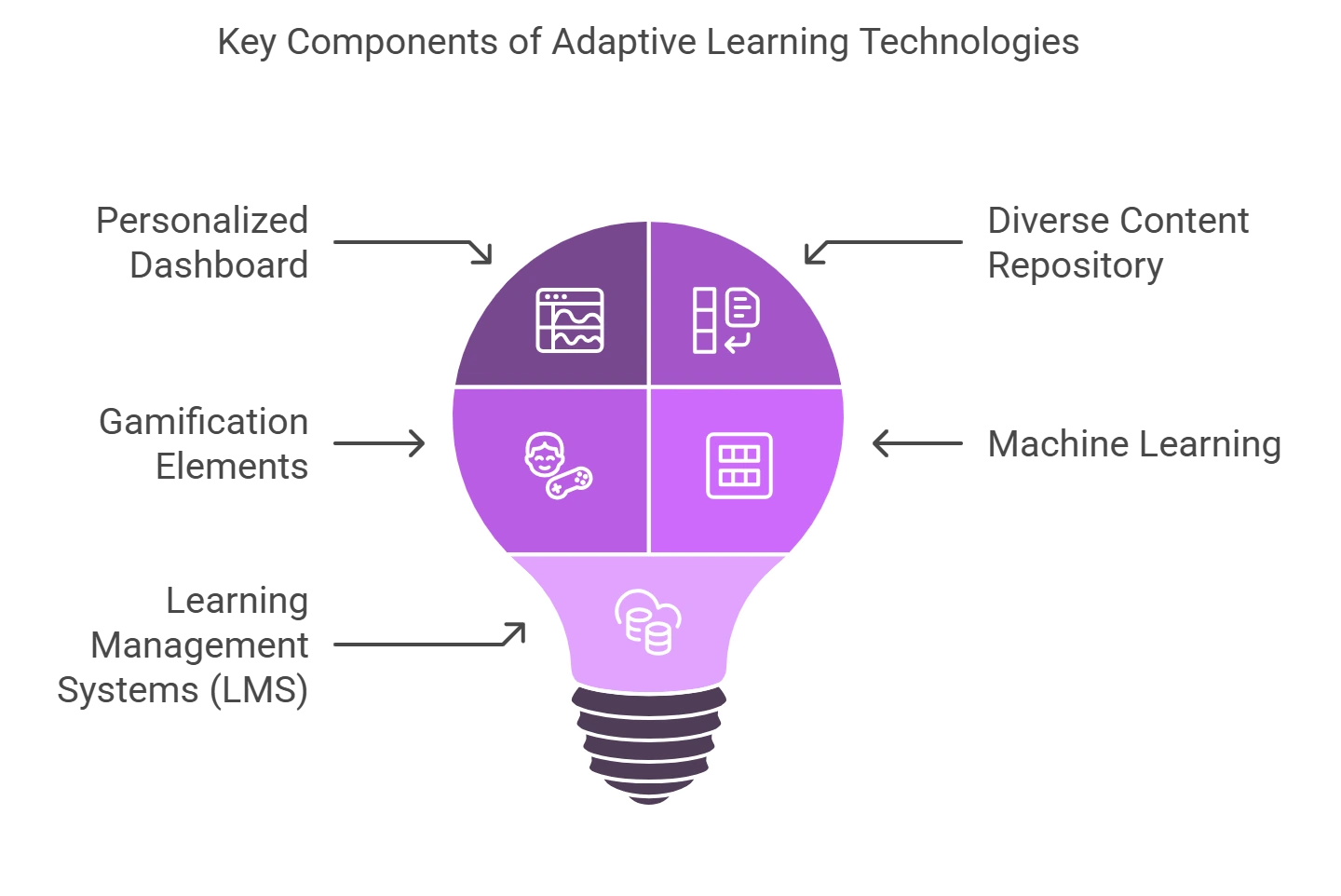
Mentioned here are some key components of adaptive learning technologies:
1. Personalized Dashboard
The personalized dashboard or the personalized engine is the control center of adaptive learning technology. You can create personalized learning paths for all your learners through this control center.
You can also continue updating them as the learners progress in their learning journey. To keep the learners creatively engaged, you can add a variety of other activities, such as assessments, pop quizzes, leaderboard competitions, etc.
2. Diverse Content Repository
As an educator, you will have to create a vast and diverse content repository of textual material, multimedia elements, assessments and quizzes, and much more.
With adaptive learning platforms, you can easily and efficiently create and maintain a content repository. Content repositories ensure solid personalized education and effective address of all knowledge gaps.
3. Gamification Elements
Gamification elements play a crucial role in inculcating self-motivation and self-direction in learners. The interactive environment and the dynamic reward systems instill a sense of accomplishment in the learners.
This encourages them to strive for the best results. Gamification elements that can be integrated with adaptive learning technologies are badges, rewards, redeemable points, etc.
4. Machine Learning
Machine learning and its various features help deliver learners a highly personalized learning experience. These include data analytics and reporting, automated pattern identification, content recommendation, predictive analytics, content tagging, and group profiling.
As learners interact with the platform, the machine learning functionalities become more precise in predicting their requirements.
5. Learning Management Systems (LMS)
Learning management systems play a crucial role in enhancing the delivery mechanisms of adaptive learning technologies. If you have top-quality learning material, but it is not being delivered effectively, it will fail to reap any benefits.
Consequently, with LMS, you can streamline your content delivery workflows for the advantage of both learners and instructors.
Additionally, with performance tracking, LMS can also identify which delivery method worked the best for the learners and why. It can then automatically incorporate the relevant strengths and positive feedback in the upcoming content delivery schedules.
Types and Use Cases of Instructional Design Strategies in Learning and Development
- eLearning Modules: The instructional strategies for eLearning solutions are a prime example of instructional design at work. They often incorporate multimedia elements, interactive, game-like quizzes, and well-structured content in microlearning modules, simple branching scenarios, and guided self-reflection to create engaging learning experiences. Quick quizzes are great for evaluating and identifying which learning module poses the maximum challenge to the learners. Process training via a non-linear approach with an easily navigable menu takes the learner step-by-step through the processes.
- Simulations and Scenario-Based Learning: These immersive experiences, often used in corporate learning services, allow employees to apply their knowledge in realistic scenarios, especially in policy training. Decision-making becomes an active learning experience instead of a passive one, thus enhancing retention and practical application.
Real-Life Examples
- Onboarding: New employees need to absorb a lot of information quickly. Microlearning will play a huge role in educating employees about relevant information. Here, too, a non-linear approach with a list of short topics enables smooth communication and easily breaks the ice. The content can be enlivened using videos and timelines, and key aspects/subjects like the company’s code of conduct and values, FAQs, and team introduction can be covered.
- Sales Training: A well-designed sales training program may include interactive simulations, case studies, and role-playing exercises. This approach enables sales teams to develop and apply their skills in real-world scenarios. Building branching into the instructional design enables the trainees and managers to see the consequences of right and wrong choices. This allows for mistakes to be made in a safe place and learning from them. It also enables behavioral change in the employees.
- Compliance Training: In industries with strict regulatory requirements, instructional design ensures employees understand and adhere to compliance standards. This can include multimedia presentations, quizzes, and scenario-based assessments. Question pools are also a great way to ensure that answers are not shared among the learners because when the learner retakes the test, the same questions are not repeated. Compliance rules and regulations are business-critical content, and an effective instructional design goes a long way in simplifying the training process of compliance.
Conclusion
Paying close attention to your instructional design can provide your learners with a meaningful and productive learning experience. Keep yourself updated with the latest adaptive learning technologies.
You can also incorporate them in alignment with learning styles, abilities, and preferences. The intelligent tutoring systems market is very competitive, and this can give you a competitive edge.
If you need help with it, you can reach out to us at Hurix Digital. We are one of the leading digital services and can find a solution to all your instructional design and adaptive learning technologies needs. Some of the other services we provide are digital content transformation, digital engineering, robotic process automation, etc.
Contact our expert team now and get started. Hope to see you soon!
Summarize with:

Senior Vice President – Business Development
at Hurix Digital, with over 25 years of experience in EdTech and workforce learning. He excels in business development, customer relationship management, and scaling digital learning solutions, driving global growth through innovative content, simulations, and AI‑driven training offerings
 Upcoming Masterclass | Build an Army of Brand Evangelists using Training & Development | November 20th, 8:30 AM PDT | 11:30 AM EDT | 10:00 PM IST
Upcoming Masterclass | Build an Army of Brand Evangelists using Training & Development | November 20th, 8:30 AM PDT | 11:30 AM EDT | 10:00 PM IST



